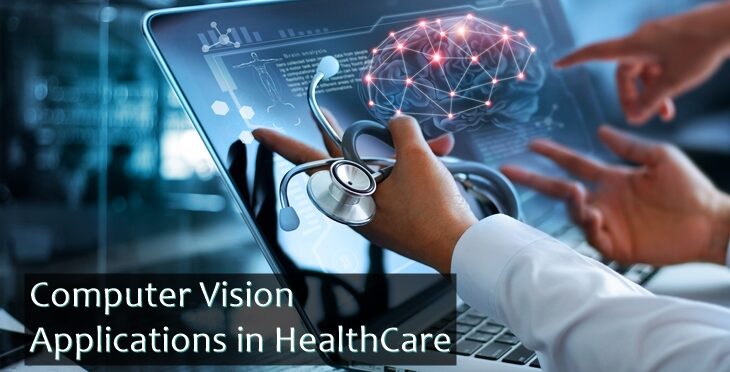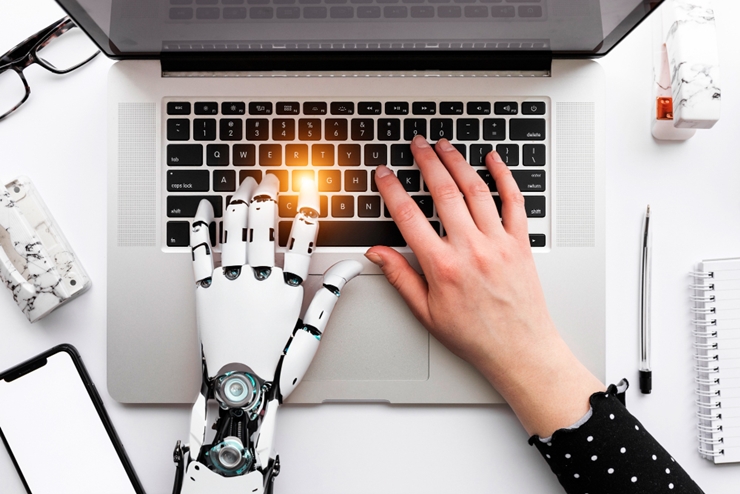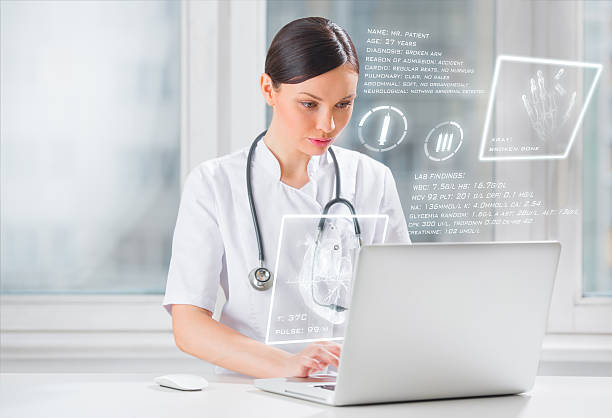The way the world sees and practices healthcare has changed drastically over the years. Technology has a big part to play in this transformation. It has changed the way diseases are diagnosed, cured, or even prevented.
Artificial intelligence has had a significant impact on this process. One notable sub-domain of AI, namely computer vision, in particular, finds more applications than most. But what is computer vision?
A sub-branch of AI, Computer vision (CV), deals with training computer systems to understand the visual world. It seeks to understand, automate, and imitate the human visual system.
The tasks involved in CV include:
- Acquiring the images.
- Processing the data in the images.
- Extracting multidimensional data from them.
This data is then analyzed to find patterns in the data to identify different objects and trends in the data.
With computer vision, computer systems are able to understand the trends and find out anomalies in the images that are fed to it. Its applications in the healthcare industry are growing by the day. They are now becoming a part of the routine processes used to diagnose and treat diseases or certain conditions. The applications make use of iterative procedures to train the system and find anomalies in the dataset in the form of images for ruling out the diagnosis.
To better understand the impact of Computer Vision in the healthcare industry, let's take a quick look at some of its applications.
Computer Vision applications are helping reduce the number of invasive surgeries that needed to be done earlier for diagnosing health concerns.
Artery's has trained their computer vision software to be able to detect anomalies in the scans of vital organs. These include the heart, liver, and lungs, among others.
Their software can be installed on a regular MRI machine. It shows the scans of the patient's organs in a 3D format that can then be checked on the computer screen.
This gives the radiologists a proper understanding of the patient's conditions without them having to undergo invasive surgeries. The system could also be able to detect abnormalities that would otherwise not have been diagnosed by the human eye, thus improving the accuracy.
Medical imaging has been an integral part of the healthcare industry for a long time. Xrays, 2D echoes, etc., are not new terms anymore.
Computer vision takes this a step further to help healthcare professionals make better-informed decisions regarding the patient's health.
Some of the applications that use Computer Vision read the 2D images and render them into a 3D format. This helps the doctors and physicians to identify the problems with better accuracy.
Microsoft's InnerEye is one such software that is capable of detecting tumors and other abnormalities in x-rays. The radiologists upload images of the scans in the software. The software then generates area measurements for various parts of the organs and ligaments shown in the scans. It then highlights the areas with tumors which the radiologist can then study to form a proper conclusion.
Computer Vision and Machine Learning applications have made early detection of cancer possible.
Some forms of cancer, such as skin cancer, might be difficult to detect as the symptoms are similar to common skin problems.
Scientists have developed applications that are able to identify the cancerous lesions on the skin out from the non-cancerous lesions. With the help of neural networks, scientists have created a model that has been trained with over 1200000 skin cancer images. The trials have shown that the model is able to diagnose skin cancer just as well as certified professionals.
Similarly, applications are being developed for the detection of bone and breast cancer as well. These applications are trained using healthy and cancerous tissue images to make out the differences between them.
Machine learning models are being incorporated in healthcare practices to improve success rates and reduce risk during surgeries. These applications help doctors prepare better for invasive surgical procedures beforehand to minimize the chances of complications.
Gauss Surgical's deep learning application called Triton is able to estimate the blood-loss in real-time during and after surgeries. Triton processes the images of the blood-stained sponges, suction machine, and other surgical instruments to assess the blood loss volume. This helps the surgeons identify the amount of blood that would be required to give to the patient during or after the procedure.
Also Read: Artificial Intelligence in Advertising: Examples & Applications
To identify the trends of progression of a certain disease scans from a patient's past can be used by research companies. These scans could provide valuable insights into the disease's progression and its response towards certain medications on certain groups of patients.
These scans and studies could help in reducing the time and efforts of clinical trials. This could also help find out ways to prevent the diseases altogether.
A major problem during clinical trials is monitoring whether the subject/patient follows the proper guidelines and prescribed treatment.
To tackle this problem, AiCure has created software that helps researchers monitor the patients during clinical trials.
It requires that the patients download their app and take medicines in front of the camera through their app. The software then ascertains whether or not the patient has taken the medication with the help of facial recognition technology.
The app also provides the users with reminders to take their medication according to their schedule.
Even the best of surgeons need prep work before any critical invasive surgeries. TouchSurgery provides immersive
and interactive simulations of surgeries.
With the help of its DS1 computer, videos of the surgeries are anonymized and uploaded on the cloud. These videos are made available to the surgeon's account on their computer as well as on their mobile app.
The software breaks down the data taken from the video with the help of computer vision, analyzes, and compares it with the time required normally to perform the procedure. This helps the surgeon to understand what and how the procedure conducted could be performed more safely and within a lesser time.
Conclusion
The healthcare industry is benefitting from the newer improvements in technology. The applications that we saw above are just a few of the many others that are still in the making. Computer Vision has great potential in improving medical procedures around the world.
Computer vision applications do surely reduce the time and efforts required in identifying health conditions or the outcomes of medication on a certain group of people. However, they cannot replace human doctors or clinical trials.
You May Also Like to Read:
Virtual Reality History: Complete Timeline Explained
How Can Simulation Software Be Used In Healthcare
Computer Vision And Facial Recognition: Real World Applications
Medical Diagnosis With Machine Learning: Advantages And Limitations





